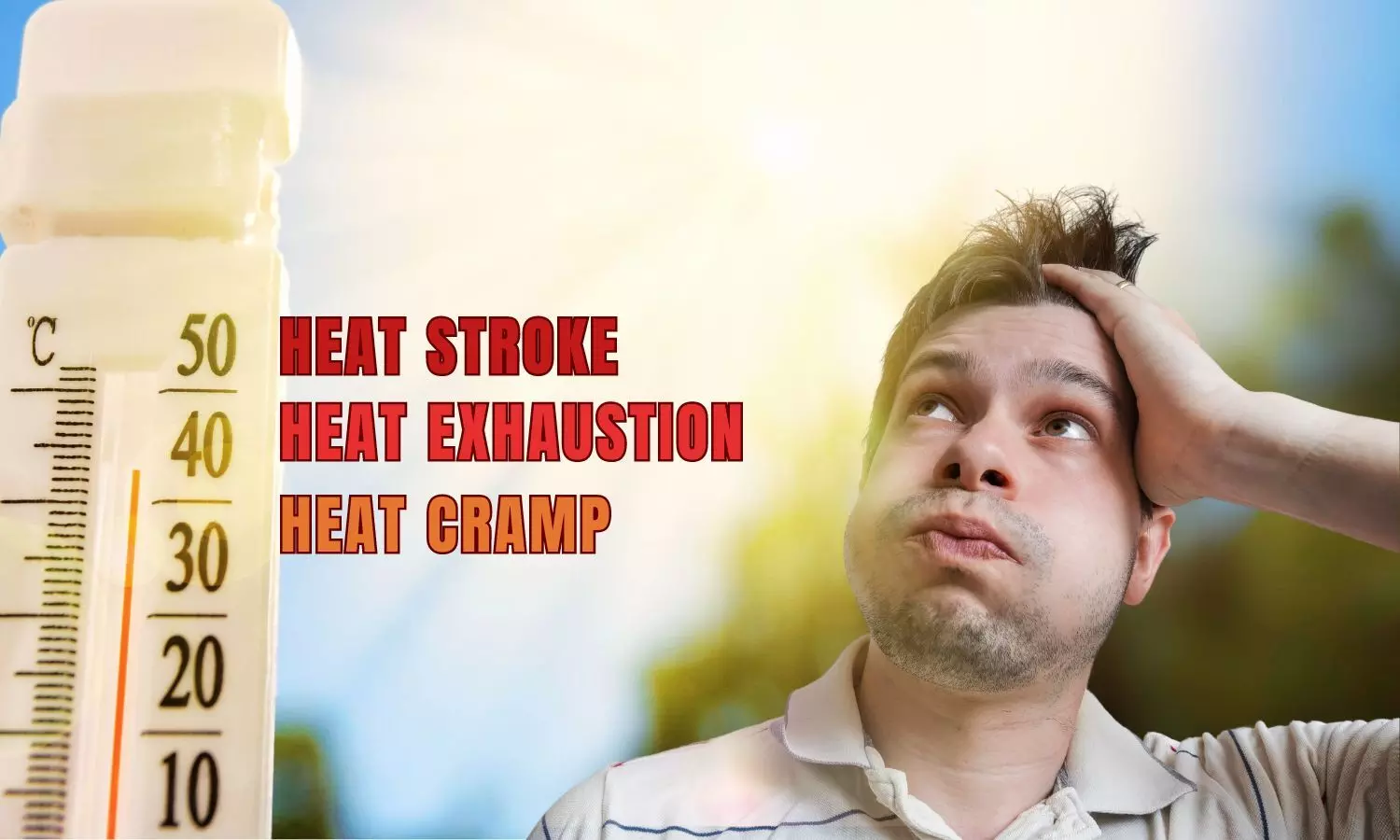Understanding the Difference: Heat Exhaustion, Heat Stroke, and Heat Cramps
Learn how to differentiate heat exhaustion, heat stroke, and heat cramps to safeguard against heat-related health risks effectively.
image for illustrative purpose

As temperatures soar and heat wave alerts dominate our screens and inboxes, it’s crucial to grasp the distinctions between heat exhaustion, heat stroke, and heat cramps. Amidst medical terminology and varying symptoms, clarity can be lifesaving. Recognizing these conditions, particularly their symptoms and necessary actions, is paramount for both adults and children exposed to extreme heat.
Heat Exhaustion
Heat exhaustion typically occurs when the body overheats due to prolonged exposure to high temperatures and inadequate hydration. This condition is marked by a rise in body temperature, often above 40 degrees Celsius (104 degrees Fahrenheit). Symptoms include muscle cramps, dehydration, nausea, headache, weakness, and an electrolyte imbalance due to significant fluid loss. Heat exhaustion, while serious, is considered less severe than heat stroke.
People at risk for heat exhaustion include athletes, outdoor workers, and individuals in poorly ventilated or hot environments. The elderly and those with certain medical conditions, such as diabetes or obesity, are also more susceptible. Treatment for heat exhaustion involves immediate cooling and rehydration. Moving to a cooler environment, drinking water or electrolyte-rich fluids, and resting are recommended. In severe cases, medical attention may be necessary to replenish fluids intravenously.
Heat Stroke
Heat stroke is the most severe form of heat-related illness and constitutes a medical emergency. It occurs when the body's core temperature rises, dangerously high, to 106 degrees Fahrenheit or higher within 10 to 15 minutes. Unlike heat exhaustion, heat stroke can lead to organ damage and require immediate medical attention. Symptoms include confusion, altered mental status, seizures, rapid and shallow breathing, flushed skin, rapid pulse, and potentially unconsciousness or coma.
Heat stroke can occur suddenly or develop from untreated heat exhaustion. Certain populations, such as individuals with pre-existing medical conditions (e.g., obesity, diabetes, cardiovascular diseases), elderly individuals, and those exerting themselves in hot environments, are at heightened risk. Treatment for heat stroke involves cooling the body rapidly, usually through immersion in cold water or applying ice packs to critical areas like the neck and armpits. Intravenous fluids may be necessary to stabilize fluid and electrolyte imbalances.
Heat Cramps
Heat cramps are painful muscle spasms that typically occur during or after intense physical activity in hot environments. They are considered a milder form of heat-related illness compared to heat exhaustion and heat stroke. Heat cramps primarily affect muscles involved in physical exertion, such as the calves, thighs, and abdomen. These spasms can be intense and may be accompanied by sweating and dehydration.
Athletes, outdoor workers, and individuals engaged in strenuous activities in hot weather are prone to heat cramps. Treatment involves resting in a cool place, hydrating with electrolyte-rich fluids (like sports drinks), and gently stretching or massaging the affected muscles. If heat cramps persist or are severe, medical evaluation may be necessary to rule out more serious conditions.
Prevention and Management
Preventing heat-related illnesses involves several key strategies -
Hydration - Drink plenty of water and electrolyte-rich fluids throughout the day, particularly during periods of high heat and physical exertion.
Clothing - Wear loose, lightweight, and light-colored clothing that allows for ventilation and reflects sunlight.
Shade and Rest -Take breaks in shaded or cooler areas, especially during peak sun hours (typically 12 pm to 3 pm).
Cooling Measures - Use air conditioning, or cool/lukewarm baths/showers to lower body temperature if feeling overheated.
Awareness and Monitoring - Be aware of symptoms of heat-related illnesses in yourself and others, particularly vulnerable individuals.
Special Considerations
Certain populations are more susceptible to heat-related illnesses -
Elderly - Age-related changes in the body's ability to regulate temperature and medications can increase risk.
Children - They are particularly vulnerable due to their higher metabolic rates and reliance on caregivers to monitor hydration and activity levels.
Chronic Illness -Conditions such as diabetes, heart disease, and obesity can impair the body's ability to regulate temperature and respond to heat stress.
Recognizing and understanding the differences between heat exhaustion, heat stroke, and heat cramps is essential for effective prevention and timely intervention. Prompt action in response to symptoms can prevent escalation to more severe conditions and mitigate potential long-term health consequences. By staying informed, practicing preventive measures, and knowing when to seek medical help, individuals can enjoy safer experiences during hot weather conditions.

